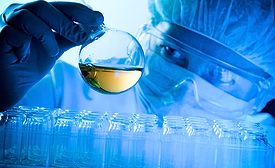Home » Keywords: » plasticizers
Items Tagged with 'plasticizers'
ARTICLES
Evonik and LIKAT Rostock Partner in Carbonylation Chemistry Development
With this new process, Evonik reports that the participating project partners are laying the foundation for a more environmentally friendly and cost-effective large-scale method of synthesis.
January 8, 2020
Evonik Supports EPA Diisononyl Phthalate Risk Evaluation
The EPA’s risk evaluation of diisononyl phthalate will reportedly be performed using the best available science and weight of scientific evidence.
December 19, 2019
Grupa Azoty Names Brenntag Distributor for its Plasticizer Portfolio in the DACH Region
Grupa Azoty has reportedly been producing plasticizers at its Kedzierzyn-Kozle site in southern Poland since 1954.
December 9, 2019
Emerald Kalama Chemical Appoints Palmer Holland as Distributor
The company will cover the Northeast U.S. territory, including New England, Northern Atlantic, Ohio Valley and Midwest.
October 19, 2018
Asia-Pacific Driving Plasticizer Demand
The plasticizer industry in Asia-Pacific reportedly accounted for about 59% of global demand in 2016.
August 11, 2017
The latest news and information
Content focused on adhesive & sealant manufacturing, formulations and finished products
SUBSCRIBE TODAYCopyright ©2024. All Rights Reserved BNP Media.
Design, CMS, Hosting & Web Development :: ePublishing

.jpg?height=168&t=1696948227&width=275)






